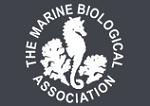APHOTOMARINE
An educational resource dedicated mainly to the photography
and diversity of marine life that can be found in coastal waters
and intertidal areas of Great Britain and Ireland by David Fenwick.

Leuconia johnstoni
- carefully removed from rock 1
Calcareous sponge
Leuconia johnstoni
- close-up 1
Calcareous sponge
Leuconia johnstoni
- close-up 3
Calcareous sponge
Leuconia johnstoni
- oscule 1
Calcareous sponge
Leuconia johnstoni
- close-up 4
Calcareous sponge
Leuconia johnstoni
- oscule 2
Calcareous sponge
Leuconia johnstoni
- in-situ on rock in pool 1
Calcareous sponge
Leuconia johnstoni
- in-situ on rock in pool 2
Calcareous sponge
Leuconia johnstoni
- habitat / location 1
Calcareous sponge
Leuconia johnstoni
- habitat / location 2
Calcareous sponge
Leuconia johnstoni
- spicules / paired rays 1
Calcareous sponge
Leuconia johnstoni
- spicules 1
Calcareous sponge
Leuconia johnstoni
- spicule 1
Calcareous sponge
Leuconia johnstoni
- spicule 2
Calcareous sponge
Leuconia johnstoni
- spicule 3
Calcareous sponge
Leuconia johnstoni
- spicules 2
Specimen above found in a small pool within a dark, cold tunnel, at middleshore level, at Watermouth Cove Holiday Park (private beach), near Ilfracombe, Devon, 16.06.18.
Spicule complement compared to that of the species featured in "A Revision of the Classification of Calcareous Sponges" by Maurice Burton. Species can be confused with Leuconia nivea and Leuconia gossei.
Species here yet to be verified.
APHOTOMARINE supports open source data recording and sharing for the benefit of wildlife, recorders, research, science and education. The project recommends the following websites and works with the following bodies and organisations.
A website based on Sponges of the British Isles 1992 Edition, revised and extended, 2007, by Bernard Picton, Christine Morrow & Rob van Soest. Without a shadow of a doubt the best online resource to sponges of Britain and Ireland.
The Marine Biological Association or MBA, based in Plymouth, is one of the world’s longest-running societies dedicated to promoting research into our oceans and the life they support. Since 1884 the MBA has been providing a unified, clear, independent voice on behalf of the marine biological community.It has a growing membership in over 40 countries.
The National Biodiversity Network or NBN is a charity that supports open source data sharing and recording supporting conservation, science and education. "Why do recorders need open source?". Simply because it supports the core values of wildlife recording and the free use of records and data over a very wide network that includes partners like the Natural History Museum.
The taxonomy used here is based on that of the following database, which is also used by the MBA, NHM and the NBN.
The World Register of Marine Species or WoRMS.

